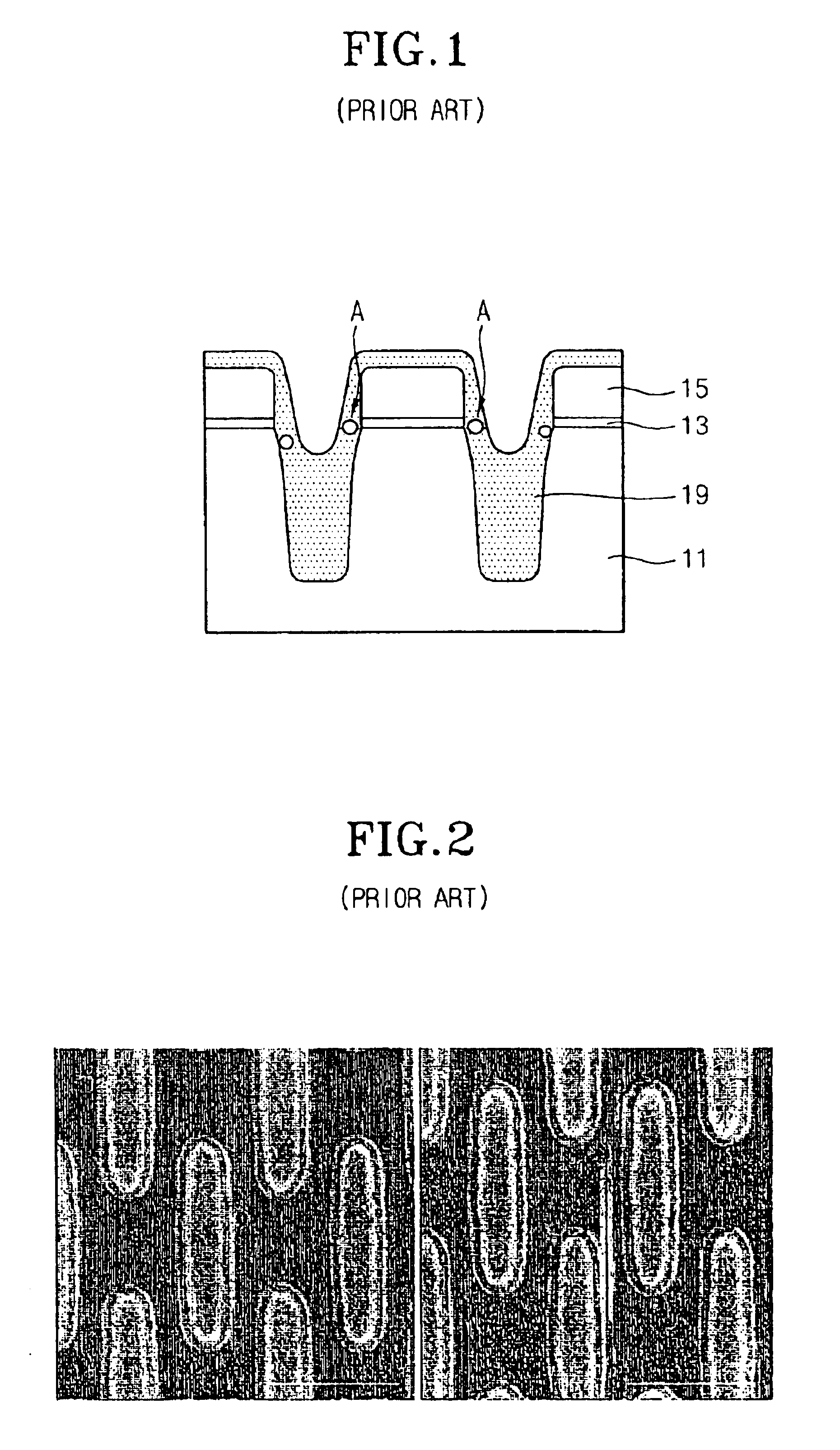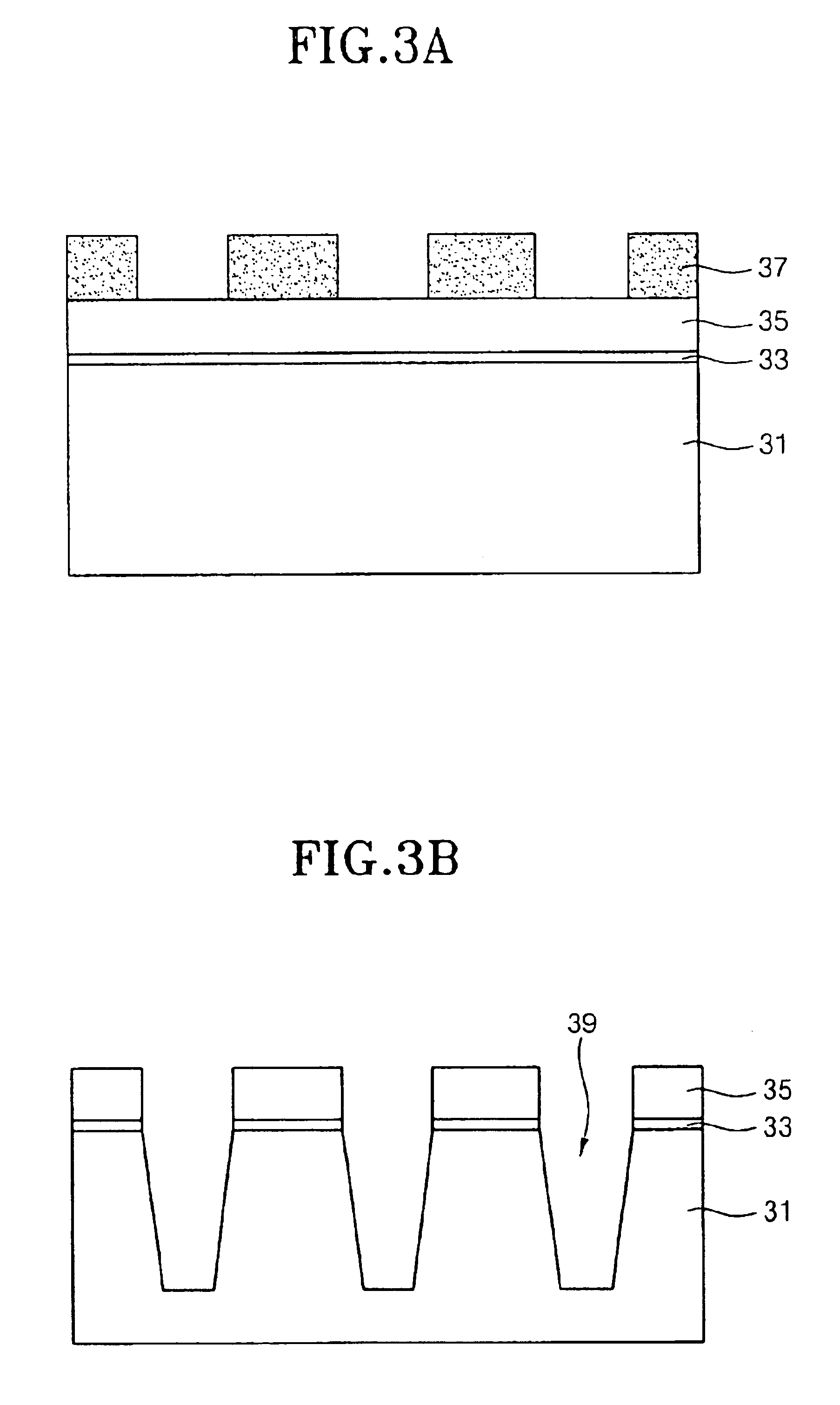Method for fabricating isolation layer in semiconductor device
- Summary
- Abstract
- Description
- Claims
- Application Information
AI Technical Summary
Benefits of technology
Problems solved by technology
Method used
Image
Examples
Embodiment Construction
[0022]Hereinafter, a preferred embodiment of the present invention will be described with reference to the accompanying drawings. In the following description and drawings, the same reference numerals are used to designate the same or similar components, and so repetition of the description on the same or similar components will be omitted.
[0023]FIGS. 3A through 3D are cross-sectional views of a process each illustrating a method for fabricating an isolation layer in a semiconductor device according to one embodiment of the present invention, and FIGS. 4A through 4D are cross-sectional views of a process each illustrating a method for fabricating an isolation layer in a semiconductor device according to another embodiment of the present invention.
[0024]Further, FIG. 5 is a photograph that shows occurrence of fine pores being decreased in the isolation layer produced by the method for fabricating an isolation layer in a semiconductor device according to the present invention.
[0025]As...
PUM
 Login to View More
Login to View More Abstract
Description
Claims
Application Information
 Login to View More
Login to View More - R&D
- Intellectual Property
- Life Sciences
- Materials
- Tech Scout
- Unparalleled Data Quality
- Higher Quality Content
- 60% Fewer Hallucinations
Browse by: Latest US Patents, China's latest patents, Technical Efficacy Thesaurus, Application Domain, Technology Topic, Popular Technical Reports.
© 2025 PatSnap. All rights reserved.Legal|Privacy policy|Modern Slavery Act Transparency Statement|Sitemap|About US| Contact US: help@patsnap.com



